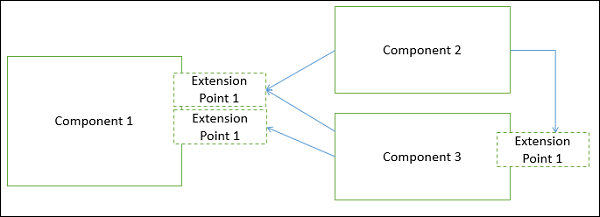reading-notes
Component-Based Architecture
Component-based architecture focuses on the decomposition of the design into individual functional or logical components that represent well-defined communication interfaces containing methods, events, and properties. It provides a higher level of abstraction and divides the problem into sub-problems, each associated with component partitions.
What is a Component?
A component is a modular, portable, replaceable, and reusable set of well-defined functionality that encapsulates its implementation and exporting it as a higher-level interface.
A component is a software object, intended to interact with other components, encapsulating certain functionality or a set of functionalities. It has an obviously defined interface and conforms to a recommended behavior common to all components within an architecture.
Characteristics of Components
-
Reusability − Components are usually designed to be reused in different situations in different applications. However, some components may be designed for a specific task.
-
Replaceable − Components may be freely substituted with other similar components.
-
Not context specific − Components are designed to operate in different environments and contexts.
-
Extensible − A component can be extended from existing components to provide new behavior.
-
Encapsulated − A A component depicts the interfaces, which allow the caller to use its functionality, and do not expose details of the internal processes or any internal variables or state.
-
Independent − Components are designed to have minimal dependencies on other components.
Principles of Component−Based Design
-
the software system is decomposed into reusable, cohesive, and encapsulated component units.
-
Each component has its own interface that specifies required ports and provided ports; each component hides its detailed implementation.
-
A component should be extended without the need to make internal code or design modifications to the existing parts of the component.
-
Depend on abstractions component do not depend on other concrete components, which increase difficulty in expendability.
-
Connectors connected components, specifying and ruling the interaction among components. The interaction type is specified by the interfaces of the components.
-
Components interaction can take the form of method invocations, asynchronous invocations, broadcasting, message driven interactions, data stream communications, and other protocol specific interactions.
-
For a server class, specialized interfaces should be created to serve major categories of clients. Only those operations that are relevant to a particular category of clients should be specified in the interface.
-
A component can extend to other components and still offer its own extension points. It is the concept of plug-in based architecture. This allows a plugin to offer another plugin API.

### Component-Level Design Guidelines
-
Attains architectural component names from the problem domain and ensures that they have meaning to all stakeholders who view the architectural model.
-
Extracts the business process entities that can exist independently without any associated dependency on other entities.
-
Recognizes and discover these independent entities as new components.
-
Uses infrastructure component names that reflect their implementation-specific meaning.
-
Models any dependencies from left to right and inheritance from top (base class) to bottom (derived classes).
-
Model any component dependencies as interfaces rather than representing them as a direct component-to-component dependency.
Advantages
-
Ease of deployment
-
Reduced cost
-
Ease of development
-
Reusable
-
Modification of technical complexity
-
Reliability
-
System maintenance and evolution
-
Independent